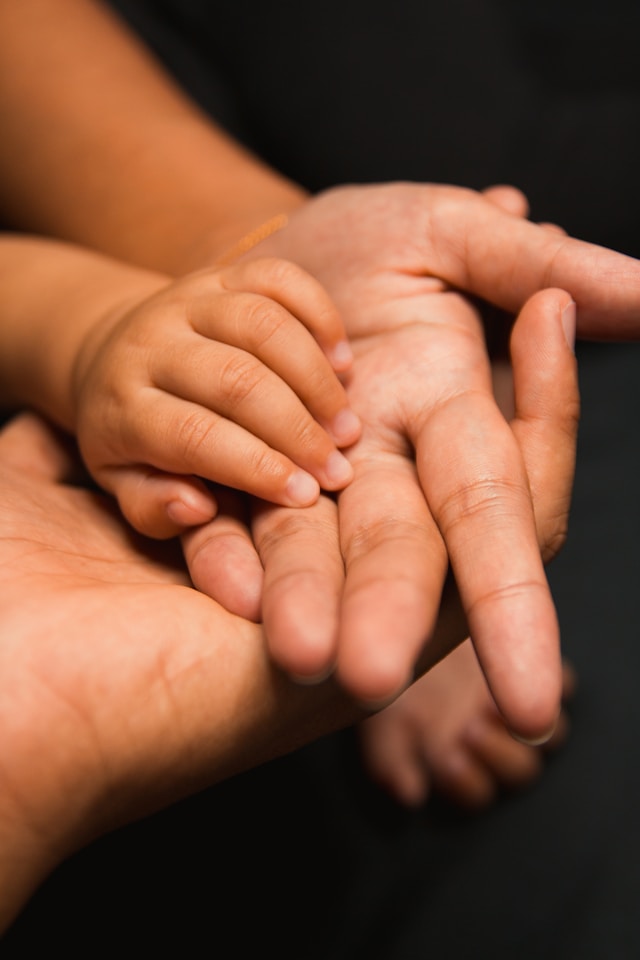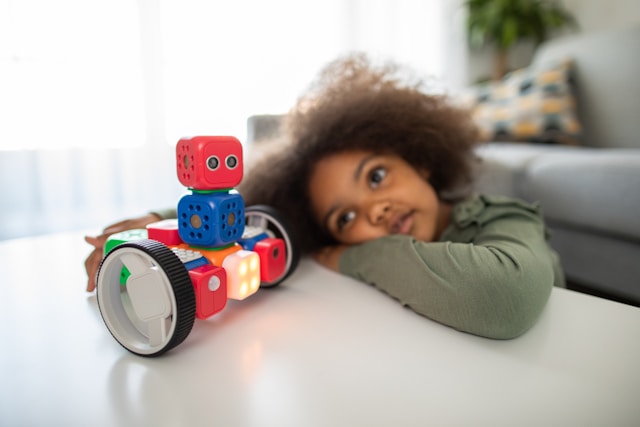Lets face it. Whenever you take your kid to the speech therapist, there is no magic that they do with them, no?
They just play the whole session away, right?
And once the session is done, they slap you with a hefty invoice while asking you to come for yet another session the next day.
And that sucks!
When I realized this, I made an intention to play lots and lots more with my son Nicholas who was speech delayed.
Of course this meant cutting out on my alcohol time with the boys after work, going out with with him more on weekends and just applying for work from home opportunities so that it would be just the two of us in the house playing the day away
Most of the games we played were not thaat expensive. In fact, some were free home made games that we had lots of fun making.
Others were rather cheap and I could always exchange them with my neighbours once we were weary of it.
Playing games is enjoyable and still enhances communication development.
Generally, many games help to develop relationship, support and improve social skills.
These games allow children to practice joint attention, turn-taking, shared emotions, and more. Hence is very helpful for children with pragmatic language disorder, autism spectrum disorder, or other social-relational impairment.
Although many games are played according to the rules, it’s easy to adapt several games to children at various developmental levels. When you switch the rules, you help children become flexible and adapt to changes. The secret is being creative and twerk different games to suit your children’s developmental ability.
In our article, we have developed a list of games and toys that you can use in your speech therapy. Whereby as a parent, you can try twerking according to your child’s needs. It’s all about being creative.
12 Fun Games to Help Late Talkers Talk
1. Guess who and where are you?
These games are most suitable for kids in mid to late elementary. Whereby both games focus on the elimination process, descriptive words, auditory processing, working memory, asking and answering questions, grammar and prepositions.
However, these games are easy to adapt to make them less challenging. In addition, children at younger developmental levels can also play on a team with an adult for additional support.
2. Blurt
This game is developed by educational insights. Kids who are in mid-elementary years to middle school have fun playing this game. The game is an excellent choice for working on language processing and working on vocabularies.
Moreover, blurt game provides the players to guess what word is being described. Fortunately, the game has different difficulty levels, making it a good choice for people with different skill levels.
3. Hedbanz
This game is developed by Spin master. The game is best suited for elementary-age children, but also can be used with middle scholars as well. The game involves guessing based on asking questions, with lots of fun involved.
Further, the game is a great choice for developing vocabulary, learning to ask and answer questions, the ability to describe things in detail, and also processing communication to hold it in short-term memory.
4. Pick and Draw
This game is developed by Rich Davis. It is a great choice for early elementary age to the early teen years. To play this game, you need to select a series of cards with different features needed to draw a face. This face is just the start off point to a variety of communication goals.
Moreover, picking and drawing bring out a lot of interacting, laughing, and talking. In addition, the game also creates room for creativity and further communication development. You can use this game to write and tell stories about the character that has been created.
The game plays an important role in allowing practice with grammar, vocabulary, sequencing, language processing, clarity of thoughts, and much more. Children love creating a series of characters that can go on adventures together.
5. Hello Sunshine and Roll and Play
These games are developed by Think Fun, with the pre scholar/toddler in mind. However, the game is also suitable for early elementary-age children. The games help to develop direction following, vocabulary, categorization, making sounds, and prepositions.
Luckily, the games are easy to play and can be adapted to match the needs of most children.
6. Treasure Hunt
You will love the sheer fun and excitement that comes along while playing this game. The game is meant to encourage language use.
To play this game, get a bucket or a toy box and throw several toys inside. Then close your eyes and go on a treasure hunt. In case you have a small sandbox, bury the toys in the sand and then proceed for a treasure hunt. As you get the toys out of the bucket, name them and also say something about them. For instance, if you get out a doll you could say, “I found a little doll!”
This game helps to work on vocabulary development, turn-taking, grammar development, and making sentences. In addition, you are also teaching irregular past tense verbs and personal pronouns.
Related: Cause and effect toys for speech therapy at home
7. Blocks
Block games are an interesting way to grow cognitive and develop motor skills. It can also help develop language. Additionally, although the old school blocks are the cheapest, they are the best. Here you get quality at a cost. Some ideas you can try while on it includes;
- Naming the pictures on the blocks
- Talking about concepts like small, big, little, up, down
- Building castles, farms, houses.
After successful masterpiece creation, make stories out of your play, animals, and people. This game helps in;
- Vocabulary development
- introducing early development concept
- structuring early narrative
Once your child learns through block play, and then plays again later, learning is emphasized better compared to app learning. More so, when you create stories, your child will learn about settings, problems, solutions, and resolutions. Which is an important scheme to master.
8. Reading
Illustrations and predictable text reading is the best way to develop expressive language. When reading with your child, you can try to read a certain page and then allow your child to read to you. Also, you can have your child name pictures, as you expand on whatever h/she says. For instance, if it is a cow, expand with “white and black cow!”
You can now ask your child to suggest what will happen next, and then ask them to read to you. As you continually play the reading game, you are working on vocabulary, early narrative structure, and everything in general.
When reading a book, it’s advisable to repeat the same book, so that your child can have exposure to vocabulary, story structure, prediction skills, grammar, and more.
9. What’s in the Cat’s Hat
This is a great game developed by Dr. Seuss, who has created several games but this one is great for speech therapy. The game works on turn-taking, asking questions, memory & recall, deductive reasoning, and direction following.
With this game, your child will learn important skills they will require throughout kindergarten, and joining the elementary school.
10. Body Parts Game
The body part game is ideal for almost all ages. How do you play this game? You can name body parts while;
- Bathing- name your child’s body parts while bathing
- Diaper changing- tickle your child’s belly, nose, or feet as you mention them
- Use stickers on the child’s favorite dolls and teddy bears. Many kids find this one interesting
- Sing the head, shoulder knees, and toes, song
With time, you can have your kid point to body parts and name them as you go.
11. Meal Time Games
Your goal is to do anything that can help your baby talk. So if mealtime can help improve your child’s language, do it. It’s both easy and functional. However, if it brings stress to either you or the baby, leave it.
To play this game, during mealtime when your child is taking more than one type of food, give two choices before he/she can have a bite then wait for a response. However, do not frustrate your kid in the process, and once a certain food is mentioned give it immediately and then repeat asking the question after a few bites.
12. Counting Games
Using these games, you can help your baby with learning numbers, by repeatedly counting out loud to him or her every day. You don’t need any extra effort, but simply start talking and counting out loud. In addition, there are interesting ideas when you can include counting numbers each day.
- You can count how many oranges you bought at the grocery store
- Count your baby fingers and toes
- Count each stair step as you carry the baby upstairs
9 Interesting Toys to Help Your Toddler Talk
Sometimes games to help late talkers talk call for exciting toys to make it more enjoyable and impactful. Luckily there are thousands of toys, with different features like spinning, lighting, and making noises.
However, the toys that are most impactful for language and speech development mostly are not the exciting toys, but the simple items available at home.
These toys possess the potential to teach interaction, pretend play, and build new vocabulary. Below are some of the toys you can use to enhance your child’s speech and language development.
1. Bubbles
Definitely, most toddlers show excitement whenever they see bubbles, so this is a great idea for your therapy sessions. Start by blowing a few bubbles and wait for the baby to show interest. As soon as you notice they want more, maybe by reaching out, making eye contact, or making a sound, say “bubble” then wait for the baby to model the word.
However, it’s okay to repeat the word several times then blow the bubbles without any response. Keep control of the bubbles so that your baby can ask for more, tempting them to communicate with you.
2. Potato Head
This is a great activity to help your child make new words, and also learn their body parts. To play this game, place all the pieces in the bag and start pulling one at a time. You can give your baby the first piece to put into the potato head without much struggle.
With the next, label the item and try to see if they attempt the word, if he/she gets it correct give them the item immediately. If they don’t repeat the word after several times, give them the item. It’s okay if they don’t say a word.
Aim at making this activity as fun as possible, become silly if need be without being afraid. The more fun it is, the more engaged your child will be. However, your child will learn; “in and out” concepts and nouns such as hat, mouth, eyes, ears, glasses, and more.
3. Little People & Bus
A toy bus is a great choice for speech and language learning opportunities. To start with, any toy vehicle has opportunities to create different vehicle sounds for your child to mimic. These sounds are not real sounds but they are easy to copy if he/she has not started saying words yet.
With the little people, you can also do a lot with them like putting them in and out of the bus. You can also make them walk, saying “walk, walk, walk” with each step. This toy helps with;
- Sounds like vroom, beep beep
- Actions like stop, go, drive
- Nouns like bus, wheel, door
- Concepts like open/close, in/out, fast/slow
- Songs like wheels of the bus
- Phrases like set, ready, go
4. Ball
Most probably you have some sort of ball at home. You can use a ball with the little one, especially those who like moving around and are active. Throwing a ball forth and backward is a great wall to communicate and teach turn-taking.
However, the longer a child can stay in the game, the greater the chance they have to learn a speech. In addition, they will learn to wait, watch others and copy what they do. Make the same words every time so that they know what to expect. Using ball toy, your baby will learn;
- Noun- ball
- Actions- roll, catch, throw
- Concepts- in/out, up/down
5. Kitchen Set
With a kitchen set, you have numerous opportunities to model language and several chances for the baby to copy your actions, which is a prerequisite skill to talking. Generally, children start with copying your actions before they can copy your words.
In kitchen play, you can pretend to eat an orange, stir a pot to see if they also do the same. While on it, say what you are doing or what your child is doing. Kitchen set game helps your child to learn;
- Nouns- name the food item
- Action- pour, cook, stir
- Concept- in/out
6. Toy phone
This is a very useful option to practice simple pretense play. Pretend to be talking on the phone, then give your child to see what they will do. To make it easier you can make sounds into the phone which is easier to imitate compared to full words.
However, many phones today make lots of noise. So, to avoid distraction you can use a stick or something simple and pretend they are phones.
7. Farm Set
You can use farm toys to model actions and sounds for your child to copy. For instance, you can make the cow jump and say “jump, jump, jump.” While doing this, encourage your baby to copy you. In case they don’t, take their hand and make it jump.
Also, you can make the animal sound and have fun with it. The crazier you are, the more fun it appears, and most probably your child will want to join you. They will learn;
- Sounds- moo, nay, oink, baa, and many more
- Nouns- horse, sheep, cow, pig et cetera
- Action- run, sleep, jump, eat
8. Piggy Bank
Toddlers love putting one thing into something else, this makes piggy bank much fun. You can improvise with an empty baby wipes box using small toys that can fit inside. However, it is advisable to do something several times so that the baby can understand the word’s meaning and make it more likely to predict what will happen. This also makes it easy to say the words.
For example, in a verbal routine you can tell your child to “put it in” (when inserting the coin) take it out (when removing coins from the piggy bank). Afterward, get the next coin and repeat the process. With time they will know what to do.
If your piggy bank makes some sound, it’s advisable not to put batteries so as to avoid interrupting the language development you are trying to model. Your child will learn;
- Concepts- in/out
- Actions- open, knock
9. Baby Doll
Baby dolls, just like kitchen play, are a nice way to practice pretend play skills while modeling language at the same time. When you encourage your child to pretend, it’s similar to helping them develop their speech and language skills.
With a baby doll, you can model different actions like baby feeding, and lay them to sleep. Your baby will learn;
- Nouns- baby bottle
- Actions- eat, sleep, drink, “shh”
Conclusion
Speech pathologists are trained to guide parents and caregivers with a variety of tricks to help late talkers, with targeted stimulation. However, you are the expert of your own child and most probably his or her world, because you know your child better.
We hope that this article has given you some insight into some fun games to help late talkers talk. In addition, we have highlighted some toys that can encourage speech in your toddler. These games are safe and allow fun both for you and your toddler, even in your natural play activities and routine. Remember consistency is the key to quality results. Best wishes!















